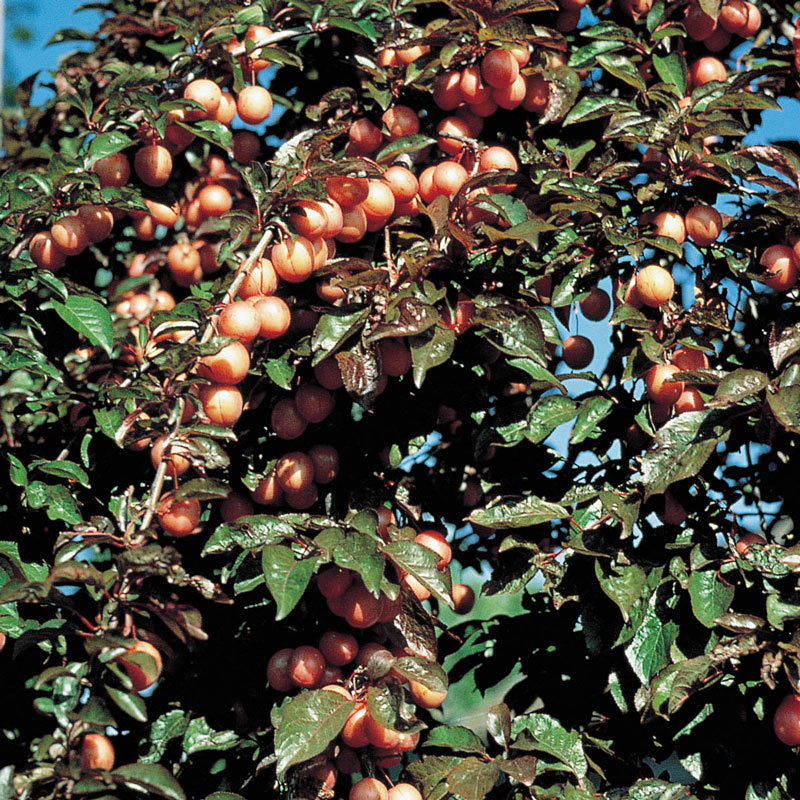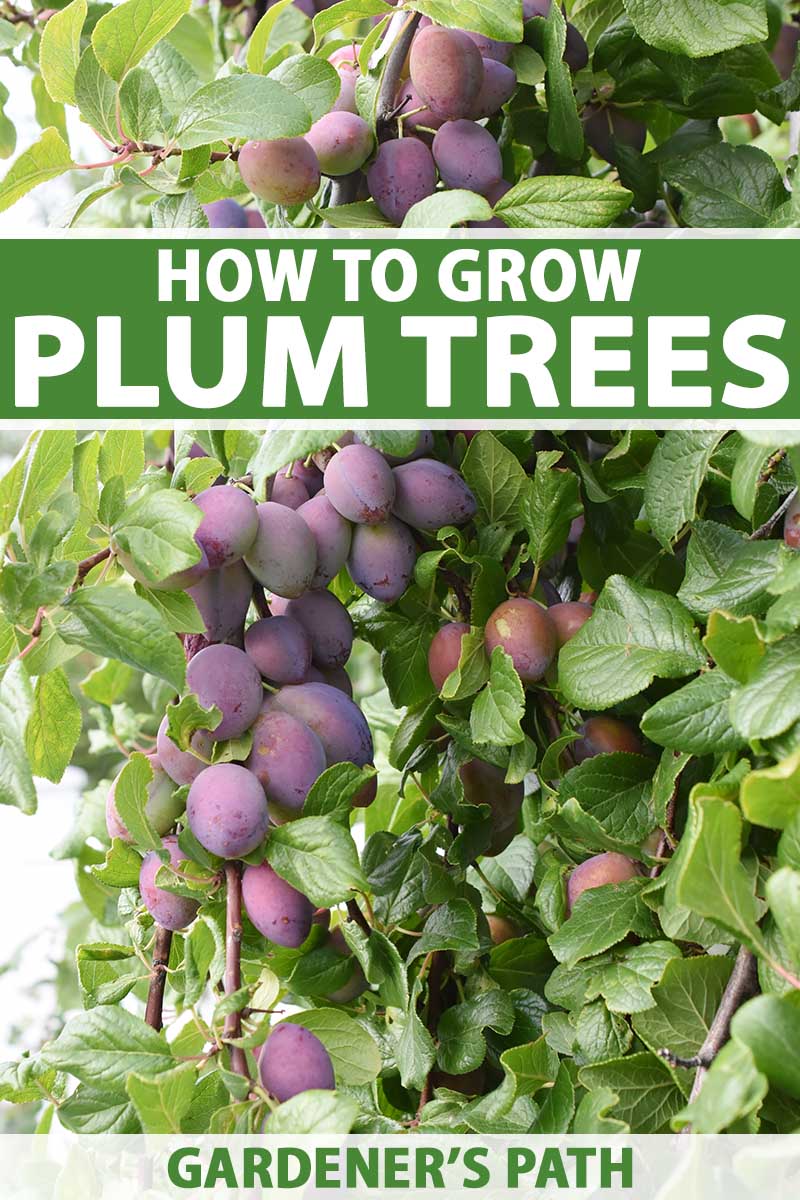
Cultivating the Jewel of the Wild: A Comprehensive Guide to Native Plum Tree Cultivation
Native plum trees, often overlooked in favor of their European and Asian cousins, are a treasure trove of ecological benefits, culinary delights, and historical significance. These hardy, adaptable trees, indigenous to various regions across North America, offer a unique and rewarding gardening experience. From their vibrant spring blossoms to their tart, flavorful fruits, native plums are more than just a landscape addition; they are a living link to our natural heritage. This guide delves into the intricacies of native plum tree cultivation, empowering you to successfully grow and enjoy these remarkable plants.
Understanding Native Plums: A Diverse Family
The term "native plum" encompasses a variety of species within the Prunus genus, each with its own distinct characteristics and adaptations. Some of the most commonly encountered native plum species include:

- Prunus americana (American Plum): Found throughout much of North America, this species is known for its thorny branches, abundant white flowers, and tart, red to purplish fruits. It’s a resilient grower, tolerating a wide range of soil conditions and climates.
- Prunus angustifolia (Chickasaw Plum): Primarily found in the southeastern United States, the Chickasaw plum is a smaller, often shrub-like tree with delicate white flowers and small, red to yellow fruits. It’s well-suited to drier, warmer climates.
- Prunus nigra (Canada Plum): Native to eastern Canada and the northeastern United States, this species boasts larger, leathery leaves and significant, tart, red to purplish fruits. It’s known for its cold hardiness.
- Prunus subcordata (Klamath Plum): This Pacific Northwest native is characterized by its smaller stature and tart, dark purple fruits. It prefers well-drained soils and can be found in mountainous regions.
While these are some of the most prominent, numerous other native plum varieties and hybrids exist, each contributing to the rich biodiversity of their native ranges. Understanding the specific species native to your region is the first crucial step in successful cultivation.
Site Selection: Laying the Foundation for Success

Choosing the right location for your native plum tree is paramount. These trees, while generally adaptable, thrive in conditions that mimic their natural habitats.
- Sunlight: Native plums are sun-lovers. Aim for a location that receives at least six to eight hours of direct sunlight per day. Insufficient sunlight will lead to reduced fruit production and a weaker, more susceptible tree.
- Soil: Most native plums prefer well-drained soil. While they can tolerate a variety of soil types, avoid areas with consistently waterlogged conditions, which can lead to root rot. Slightly acidic to neutral pH is generally ideal. Incorporating compost or well-rotted manure into the planting hole can improve soil structure and fertility.
- Air Circulation: Good air circulation is important for preventing fungal diseases. Avoid planting your plum tree in a low-lying, damp area where air movement is restricted.
- Protection: While native plums are generally hardy, young trees can benefit from protection from harsh winds and extreme temperatures. Consider planting near a windbreak or providing temporary protection during their initial establishment phase.
- Pollination: Many native plum varieties are self-incompatible, meaning they require a different plum variety for cross-pollination to produce fruit. Research the pollination needs of your chosen species and plant at least two compatible varieties within reasonable proximity (ideally within 50-100 feet). Some native plums, however, are self-fertile, so it’s essential to verify this characteristic.
Planting Your Native Plum Tree: A Gentle Beginning
The best time to plant a native plum tree is typically in the dormant season, either in late fall after leaf drop or early spring before bud break.
- Dig the Hole: Dig a hole that is at least twice as wide and as deep as the root ball of your tree. This allows the roots to spread out and establish themselves easily.
- Prepare the Tree: Gently remove the tree from its container. If the roots are tightly coiled (root-bound), carefully loosen them with your fingers or a small trowel. If the tree has bare roots, inspect them for any damaged or broken sections and prune them cleanly.
- Position the Tree: Place the tree in the center of the hole, ensuring the top of the root ball is level with or slightly above the surrounding soil. Avoid planting too deep, as this can suffocate the roots.
- Backfill the Hole: Fill the hole with the excavated soil, gently tamping it down as you go to eliminate air pockets. Avoid adding excessive amendments directly into the planting hole, as this can create a "bathtub effect" where water collects.
- Water Thoroughly: Water the newly planted tree deeply to settle the soil around the roots and provide essential moisture.
- Mulch: Apply a layer of organic mulch (such as wood chips, straw, or compost) around the base of the tree, keeping it a few inches away from the trunk. Mulch helps retain soil moisture, suppress weeds, and regulate soil temperature.
Care and Maintenance: Nurturing Growth
Once planted, your native plum tree will require ongoing care to thrive.
- Watering: Young trees will need regular watering, especially during dry spells, for the first few years until their root systems are well-established. Mature trees are generally more drought-tolerant but will benefit from deep watering during prolonged dry periods, particularly when fruits are developing.
- Fertilizing: Native plums are not typically heavy feeders. A light application of a balanced, slow-release fertilizer in early spring, before bud break, is usually sufficient. Avoid over-fertilizing, which can promote excessive leafy growth at the expense of fruit production.
- Pruning: Pruning is essential for maintaining the health, shape, and productivity of your native plum tree.
- Dormant Pruning (Late Winter/Early Spring): This is the primary pruning time. Remove any dead, damaged, or crossing branches. Thin out dense areas to improve air circulation and light penetration. Aim for an open, vase-like structure.
- Summer Pruning: Light pruning in summer can be done to control water sprouts (vigorous vertical shoots) and to manage the tree’s size.
- Pest and Disease Management: Native plums are generally more resistant to pests and diseases than their cultivated counterparts. However, they can still be susceptible to issues like:
- Plum Curculio: A small beetle that damages fruit.
- Aphids: Tiny insects that can infest new growth.
- Fungal Diseases: Such as brown rot and leaf spot, which are often exacerbated by wet conditions.
- Monitoring your tree regularly for signs of infestation or disease is key. Many issues can be managed through good horticultural practices, such as proper pruning for air circulation and sanitation (removing fallen fruit and leaves). Organic pest control methods can be employed if necessary.
Harvesting the Bounty: A Taste of the Wild
The harvest time for native plums varies depending on the species and your geographic location, typically occurring from late summer through early fall.
- Ripeness Indicators: Fruits are generally ready when they have reached their mature color (which can range from yellow to deep purple), feel slightly soft to the touch, and easily detach from the branch with a gentle tug. Some varieties will drop ripe fruit, so be sure to check the ground beneath the tree.
- Harvesting Techniques: Harvest fruits by gently twisting or pulling them from the branch. Avoid bruising the fruit, as this can reduce its shelf life.
- Yield: The yield of native plum trees can vary greatly depending on the age of the tree, pollination success, and environmental conditions. Young trees may produce a small crop, while mature trees can be quite prolific.
Culinary Delights: Recipes for Native Plums
The tartness of native plums makes them exceptionally versatile in the kitchen. While some varieties can be enjoyed fresh, many are best suited for cooking, where their bright flavor can shine.
Listing of Recipes:
-
Native Plum Jam:
- Ingredients: 4 cups chopped native plums (pitted), 2 cups sugar, 1 tablespoon lemon juice.
- Instructions: Combine all ingredients in a large, heavy-bottomed pot. Cook over medium-high heat, stirring frequently, until the mixture thickens and reaches the setting point (around 220°F or 104°C). Skim off any foam. Pour into sterilized jars and process in a water bath canner for 10 minutes.
-
Spiced Native Plum Compote:
- Ingredients: 3 cups chopped native plums, 1/2 cup water, 1/4 cup brown sugar, 1 cinnamon stick, 2 whole cloves.
- Instructions: Combine all ingredients in a saucepan. Bring to a simmer, then reduce heat and cook, stirring occasionally, until the plums are tender and the sauce has thickened. Serve warm over pancakes, waffles, or yogurt.
-
Native Plum Cobbler:
- Ingredients: 4 cups native plums (pitted and halved), 1/2 cup sugar, 1 tablespoon cornstarch, 1 teaspoon cinnamon, 1/4 teaspoon nutmeg. For the topping: 1 cup all-purpose flour, 1/2 cup sugar, 1 teaspoon baking powder, 1/4 teaspoon salt, 1/2 cup milk, 1/4 cup melted butter.
- Instructions: In a bowl, toss plums with sugar, cornstarch, cinnamon, and nutmeg. Pour into a greased baking dish. In another bowl, whisk together dry ingredients for the topping. Add milk and melted butter, stirring until just combined. Pour batter over the plums. Bake at 375°F (190°C) for 30-40 minutes, or until golden brown and bubbly.
-
Native Plum Sauce for Pork or Poultry:
- Ingredients: 2 cups native plums (pitted and roughly chopped), 1/4 cup red wine vinegar, 2 tablespoons honey, 1 small minced shallot, pinch of salt and pepper.
- Instructions: Combine all ingredients in a saucepan. Bring to a boil, then reduce heat and simmer for 15-20 minutes, or until thickened and the plums have broken down. Strain if a smoother sauce is desired.
-
Native Plum Salsa:
- Ingredients: 2 cups native plums (pitted and finely diced), 1/4 cup finely chopped red onion, 1-2 tablespoons finely chopped jalapeño (seeds removed for less heat), 1 tablespoon chopped fresh cilantro, juice of 1/2 lime, pinch of salt.
- Instructions: Gently combine all ingredients. Let sit for at least 15 minutes to allow flavors to meld. Serve with chips or as a topping for grilled fish or chicken.
Conclusion: A Rewarding Endeavor
Cultivating native plum trees is a journey that offers a profound connection to the natural world and a delicious reward. By understanding their needs, providing proper care, and embracing their unique characteristics, you can successfully grow these resilient and fruitful trees. Whether you’re aiming to support local ecosystems, enjoy the unique taste of wild fruits, or simply add a beautiful and productive specimen to your landscape, the cultivation of native plum trees is a deeply rewarding endeavor. Embrace the jewel of the wild and savor the fruits of your labor.

